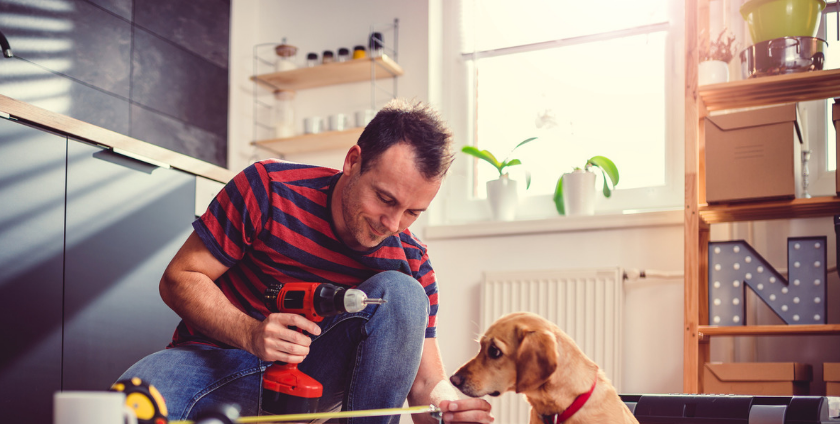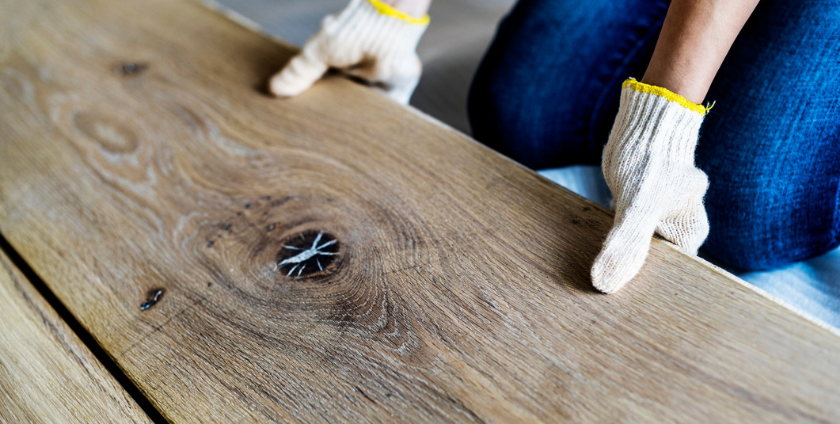7 Steps to Ensure Your DIY Hardwood Flooring Installation is Not DOA

- Tags: cleaning, DIY, engineered hardwood, installation, subfloor, VOCs
- Category: Blog
- 0 comment
Not all DIY projects are created equal. There are those that are so straightforward, all you need is to watch a good YouTube how-to video and you’ll be fine. Others, not so much.
The installation of hardwood flooring falls under the latter. If you don’t have experience in flooring installation, many factors can not only derail the project but also nullify the entire flooring warranty down the road. That’s why LIFECORE always cautions customers to hire a professional unless you have previous experience installing engineered hardwood flooring.
That said, if you do decide to proceed with a DIY installation, we’ve provided a list below of some common mistakes made by do-it-yourselfers. Why do we emphasize the negative? Because the “DON’Ts” are just as important as the “Dos,” and you should be well-versed in them before the flooring is even purchased.

1) DON’T forget to thoroughly read the manufacturer’s installation instructions and warranty before you begin the process. Above all else, this is THE rule. Manufacturer’s installation instructions can vary from product to product as well as with each subfloor situation. Most manufacturers include installation instructions in each box of flooring containing all the information you’ll need on how to install their flooring on your subfloor. You will also find which tools, accessories, etc. that you’ll need.
A manufacturer’s warranty will let you know what is and isn’t covered to help you navigate the installation process and prevent you from voiding out a warranty before you even finish the floor. Most claims made come from improper installation and void the warranty. You can find both for LIFECORE here.
2) Don’t forget to add 5-10% more to the actual square footage when ordering. Not ordering enough flooring is a common mistake that can stop a project in its tracks, especially since cutting and error happen even with professional installers. Measure the room as well as inside closets, hallways, stairs, etc. if you plan to carry the flooring to those areas, then add 5-10% above that. Most hardwood flooring manufacturers maintain a range of consistency for color and style, however this is a natural product where color and grain can vary from production run to run. It’s safer to buy extra and return it if necessary than to run short.
3) Don’t forget to acclimate the flooring before installation. If the flooring is not adjusted to an environment’s moisture level at the time of installation, it runs a very high risk of expansion or shrinkage. It’s commonly recommended to store the closed cartons of flooring for at least three days prior to installation in the room it is going to be installed in. Equally as important is to make sure that the environment is within a relative humidity range of 35-55% with a temperature range of 60-80 degrees Fahrenheit.
4) Love your floors before you begin and don’t forget to have a layout plan for your floor’s design. Yes, that’s a thing. If you start installing without an idea of the pattern you want to create you can run into issues during installation and/or end up with a look you don’t want. Hardwood is a natural product and will have unique visual graining and markings as well as color range from light to dark planks. Prior to installation, open the boxes, removing planks from each carton and layout the planks in the room to find the look that works best for you. Also, consider where long and shorter planks will be placed. Shorter planks should be positioned carefully. Don’t forget to take into consideration how planks flow into highly visible areas such as entryways, stair landings, in front of a fireplace, etc.
5) Don’t forget to inspect the subfloor before laying the planks. Subfloors need to be level to avoid overwood (when one board is not vertically flush with adjacent boards). Overwood can occur over time, lifting planks or causing gaps between ends and planks. You will also want to make sure that the subfloor is clean, sturdy, and well attached, with the proper number of fasteners to avoid movement or splitting.
6) Don’t add unnecessary VOC’s to your home. You’re choosing LIFECORE hardwoods for the ZERO-ADD and healthy home advantage. Installing your new floors with a high VOC adhesive will only add to unwanted off-gassing in your home. Choose a low VOC product, vent after installation, and your lungs will thank you.
7) DON’T use the wrong cleaning agents on your newly installed floors. This is one of the biggest problems with newly installed hardwoods. By using products not recommended by the flooring manufacturer, you can not only ruin a floor but void the manufacturer’s warranty as well. Even something as simple as washing or wet-mopping the floor with soap and water can cause swelling warping, delamination, and joint-line separation. Not all flooring finishes are created equal, and most have evolved in the last decade. Common products from the old days like oil soap, polishes, vinegar, waxes, etc. can dull a new floor’s finish permanently. To clean up post-installation, remove debris via dust mop, soft bristle broom or vacuum, (using the hard floor attachment, not the beater bar) and go over it once with Bona Hardwood and Bona mop with the microfiber cleaning pad. LIFECORE flooring has 9 coats of UV hardened Matte finish for beauty and durability. These are the only cleaning products that LIFECORE recommends for its floors.
If you DO DECIDE to install your own floors yourself, we wish you success and remember we are here to help. If you DON’T, then you can find some helpful tips about hiring working with and preparing for a professional installer here.
Good luck!
Leave a Reply
